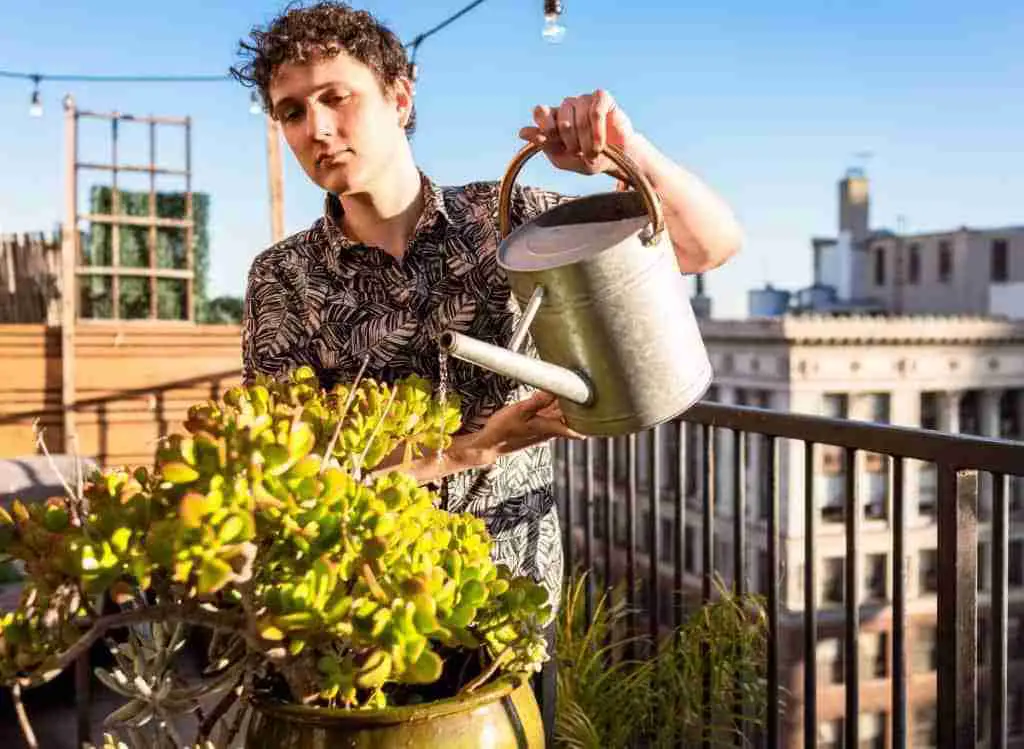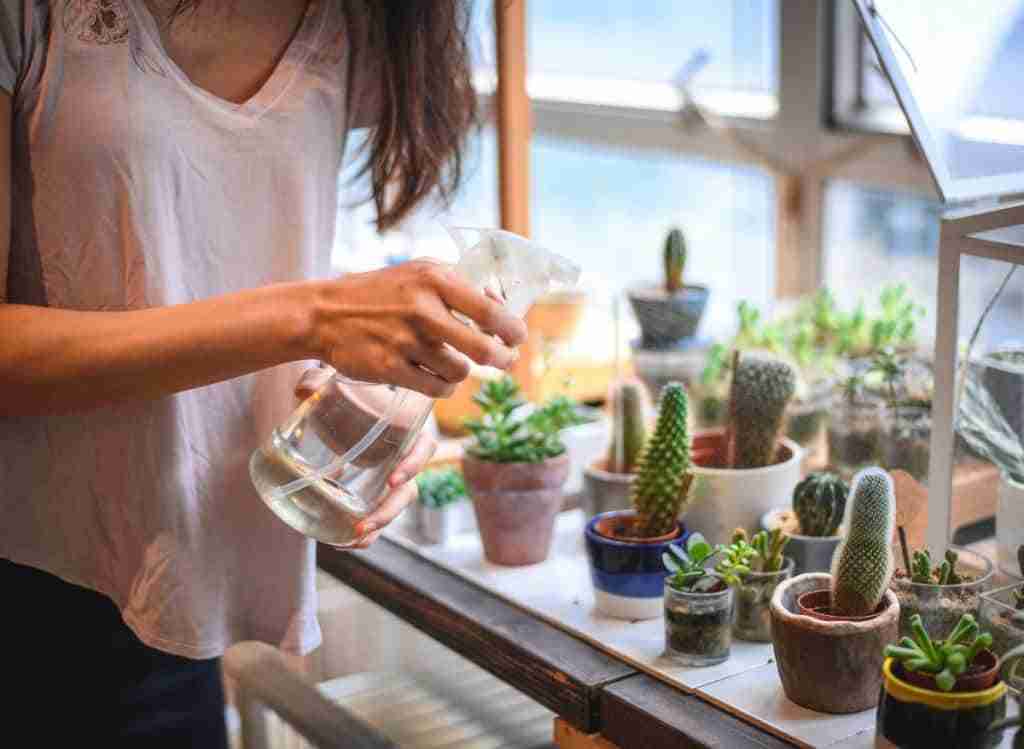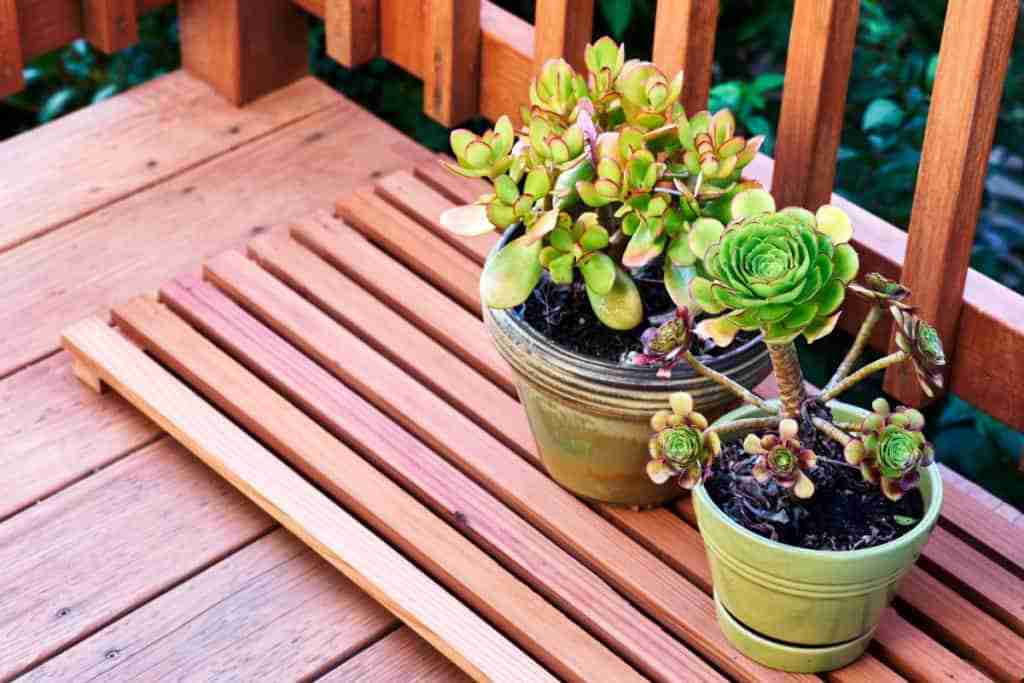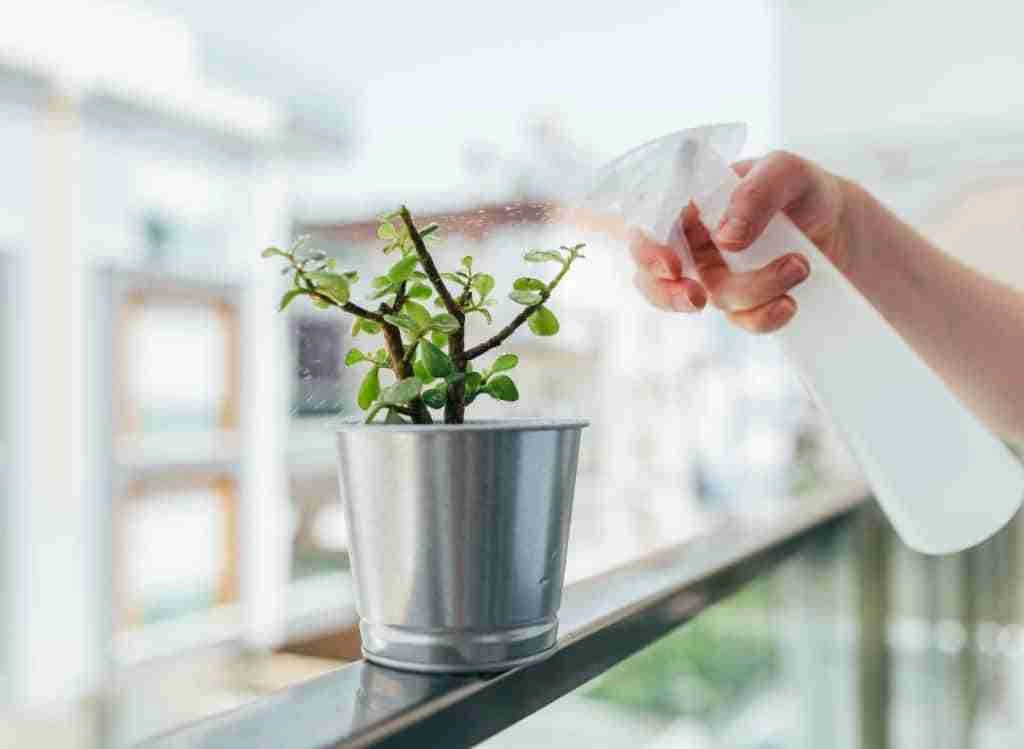
Succulents are beautiful plants that are usually low maintenance and don’t need frequent watering. They come in many different species, shapes, sizes, and colors, and each species comes with additional needs. Watering a succulent is relatively simple, and you need efficient drainage to keep succulents happy and healthy; but what happens if you don’t have sufficient drainage?
Maintaining succulent health isn’t that difficult, but not having sufficient drainage can lead to your succulent being overwatered and root rot, potentially killing your succulent.
This guide will help you learn how to keep your succulents happy and healthy, even without drainage, considering the many factors contributing to a succulent’s watering needs.
Also see: How Often Should You Be Watering Your Terrarium? This Often!
Why do Succulents Need Drainage?
Almost all plants need good drainage for many reasons, mostly to prevent root rot and make sure the roots don’t get waterlogged, which will weaken the roots and prevent plants from absorbing nutrients from the soil. If a plant can’t absorb nutrients from the soil, it won’t be able to photosynthesize to create its food correctly.
Succulents are generally drought-resistant, and they store water inside their leaves, giving them their thick, luscious appearance. Overwatering succulents can prevent them from holding water, and when a succulent has root rot, you won’t know until it is too late.
Reasons for not Having Drainage
Not having drainage can occur in many instances. If your succulents are buried in the ground, you probably don’t need to modify your yard to create drainage. You will come into some problems with drainage if you have:
- Potted or hanging plants without drainage holes
- Using the wrong type of soil
- Plastic, glass, or ceramic pots
Also see: What Temperature Is Too Cold For Succulents? This Cold!
1- Watering Without Drainage
If you don’t have sufficient drainage, don’t worry! You can still water your succulents and keep them healthy. There are several methods you can follow to water your succulents without drainage, including:
- Testing soil dryness
- Properly preparing the pot.
- Weighing the pot before and after watering
- Measuring and recording the amount and frequency of watering
When watering your succulent, it is okay to get water on the leaves, but if you notice that water is staying inside the plant for more than a day, you should dump the water, or if the leaves are spacious enough, you can use a rag to absorb the water. Do not do this if you have a cactus. If you leave water on the leaves for too long, it can cause the plant to rot.
Here is an excellent video showing how to water a succulent properly.
2- Testing Soil Dryness
Most plants don’t need to be watered as a rule of thumb unless the top two inches are dry. For succulents, almost all of the soil should be dry. The best way to test this is to stick your finger in the soil to see if it is wet or dry.
If you don’t want to stick your finger in the soil every day, you can purchase a moisture meter to let you know how dry or damp the soil is.
Moisture meters, such as the Sonkir Soil pH meter, are also excellent because many can tell you the soil’s pH level. Knowing the soil’s pH is vital for a plant’s health because changes in soil pH can lead to your plant dying, but they are incredibly fixable. Succulents tend to do best in a higher pH soil than most other plants.
Using a glass pot or container is another excellent method because you can see how dry the soil is.
3- Spraying The Succulent
Many people do not recommend spraying the succulent to water it. You shouldn’t use a spray bottle to water a succulent because keeping the top of the soil dry won’t help your succulent get water, mainly because they absorb their water through the roots. Succulents need fast, deep watering for them to thrive.
Instead of spraying your succulent, you can pour water onto the plant’s base using a watering can, measuring cup, or a bottle with a nozzle tip.

4- Amount To Water
Succulents are great plants for people who don’t have a lot of time to maintain them. Most succulents don’t need a lot of water. The best way to ensure your plant is getting the correct amount of water is to use a measuring cup, even spoons, or a pipette for smaller plants.
A general rule of thumb for the amount to water a succulent is to use half the pot’s volume, so if your pot holds 2 cups of soil, you’ll water it with one cup. If you’re finding that this is too much or too little, you can adjust the amount you water each time you water.
Another useful rule to follow when watering succulents is that it is better to underwater them than overwater them. It is much easier to replenish an underwatered succulent than to try to fix a succulent that has been overwatered and has root rot.
You should also try to water your succulent with distilled or rainwater because many areas have high mineral content in their water, altering the minerals and nutrients in the soil. If you don’t want to splurge on distilled water, you can collect fresh rainwater from buckets on rainy days.
Also see: Can You Plant Succulents In Rocks? Pros & Cons Of Doing So
5- Watering Frequency
As mentioned earlier, succulents don’t need to be watered often. Many succulent owners choose only to water them when the soil is dry, and watering frequency will be variable depending on soil type, temperature, humidity, sun exposure, and pot size.
You can test the soil to see if your succulent needs to be watered, or you can follow this chart as a baseline:
| Plant | Watering Frequency |
| Echeveria | It can go 2-12 weeks without watering but try not to err on the longer side if you notice your plant is wilting. They are also extremely susceptible to over-watering |
| Snake Tongue | It should be watered every 2-8 weeks. They thrive on infrequent watering. |
| Cactus | Watering once per week in the spring and summer and in the winter and fall every two weeks or as soil dries. |
| Jade Plant | Water every 2-3 weeks or as the top two inches of soil dries. |
Another method to use to know if your succulent is ready to be watered is to weigh your pot. You don’t need a scale, but you can lift the pot and note how it feels after watering.
Over the next few days, it will become lighter as the water evaporates. Once the pot doesn’t have much weight in it, you can water it.
You can also record when and how much you water your plants with a book, notes on your phone, or even an app.
6- Humidity And Temperature
Almost every succulent thrives in a dry climate because they have evolved to go more extended periods without water.
Besides plant species, your environment affects how often you water your succulent. If you are in a more humid climate, you won’t be watering your succulent as frequently as someone in a dry environment.
Warmer weather will also cause water to evaporate faster, leading to more frequent watering.
You will need to water them more frequently if they are in direct sunlight or near a heat source with indoor succulents.
7- Water Temperature
Always try to water plants with room temperature water. If you water plants with hot water, it will burn the roots, extremely unhealthy for succulents.
If you water plants with cold water, you can shock them because they will think it is winter.
The best way to ensure you have room temperature water is to put water in a container from your sink or collect the rainfall and let it sit for a day.
8- Time of Day to Water
Watering plants at certain times of day have different benefits. It is usually best to water your plants in the morning because the sun will evaporate excess water on the leaves.
It is best not to leave too much water on the plant leaves because it is space for bacteria to grow, which leaves watering at night, not an ideal time.
Avoid watering your succulent in the late afternoon and evening because the water is more likely to stay inside the pot and absorb into the soil.
Also see: What Temperature Is Too Cold For Succulents? This Cold!
How to Start Strong Roots in Succulents?
Like every other plant, succulents depend on their root system to help absorb nutrients. However, succulent’s roots need to be stronger than others because they need to uptake the water faster than most roots. After all, that is how they evolved to survive.
Don’t water it immediately when you first plant your succulent in a pot. You can let them sit for a few days to let them get settled in, and then you can water them.
The best way to make sure a succulent’s root system is robust is to water it until drainage happens and re-water it when the plant dries out. This is more difficult without drainage but isn’t unattainable. Following this guide will help succulents in pots without drainage to grow strong roots.
Avoid watering your succulents too little and frequently. Succulents’ roots have evolved to grow and strengthen when they experience heavy watering after a dry period. Small, frequent waterings will cause your succulent to have a weak root system.
Create Your Drainage
If you don’t have sufficient drainage and can’t adhere to the above guidelines, there are some things that you can do to create drainage to help your succulent a bit, such as:
- Using well-draining soil
- Placing rocks and pot fillers at the bottom of the pot
- Changing the structure of the pot
- Using a specific pot material
1- Well-Draining Soil
Using well-draining soil for your succulent is vital to have good drainage, even if your pot doesn’t have a place for the water to escape. You shouldn’t use regular potting soil because it is denser, and the water will stick to the soil particles. Many nurseries and home improvement stores have well-draining soil available.
Well-draining soil is a blend of different-sized particles to help with percolation, allowing the water to travel down instead of sticking to the soil and roots.
It also prevents the water from remaining at the bottom of the pot, which can prevent your succulent from absorbing the water if you’re using a larger pot.
Additionally, it allows more airflow to let the water that isn’t absorbed by the roots evaporate.
If well-draining soil isn’t available to you or you need a smaller amount than the bag at the store, you can make your own. It should be a mix of organic materials, such as bark and rocks. Here is an excellent recipe for well-draining soil.
Having a low amount of organic matter in the soil will prevent the soil from holding onto the water and rotting the roots.

2- Rocks and Other Pot Fillers
Another great way to create drainage in your succulent pot is to place rocks or other objects in the pot before you place the soil. This helps the water trickle down instead of soaking in the soil and prevents succulents from being overwatered. If you are going to use objects as a base for your plant, be sure to change them frequently.
For small succulents, you can use different-sized small rocks and pebbles at the bottom and mix them into the soil to help with percolation. Bigger pots will require rocks. You can even use empty, drained, and cleaned soda cans.
One downside to adding pot fillers is that they can trap and hold water if the soil above doesn’t permit airflow, creating a water table.
Some great options that you can add to your pots to help promote airflow and prevent roots from soaking in water for too long are:
- Pumice is excellent because it absorbs excess water and promotes good airflow.
- Gravel is good to mix into the soil or have a layer because it will absorb some water and allow runoff for aeration.
- Charcoal is an excellent option because it will absorb the water’s impurities and odors from leftover water.
- Perlite doesn’t retain water, allowing more oxygen to reach the plant roots.
- Peat moss is another attractive option because it doesn’t absorb the water but promotes aeration and quicker dry times.
Compost
Succulents get and retain most of their nutrients from the water and soil. Feel free to add any compost to your well-draining potting mix to help keep your succulent and soil healthy. Compost has many benefits, including:
- Safe for the environment
- Creates nutrient-rich soil
- It is a natural fertilizer
You also don’t need to buy compost from the store. Here is an excellent guide on starting your compost pile, no matter how big or small!
Remember never to add rotted plants to compost because the plant’s disease may thrive in a pile and contaminate it. You should also never add cat or dog feces because they contain dangerous toxins.
3- Pot Adaptations
You can do several things to adapt to your pots for better drainage. One thing you can do is drill holes into the bottom of the pot; this way, when the soil becomes saturated, the water will seep through the holes instead of collecting at the bottom of the soil.
When using this pot adaptation, make sure to keep a drainage tray underneath the pot to catch the water, especially if you have indoor succulents.
It also works best with plastic pots. Avoid doing this with glass or ceramic pots. Here is a beautiful video on how to drill drainage holes into pots without breaking them.
Cachepots
Another thing you can do to adapt your pot is to create or buy a cachepot. You will have to drill a hole into your smaller pot to create some sort of drainage, but then you will place it inside a bigger pot, also known as the cachepot. You can also find a smaller pot that already has a drainage hole.
The cachepot will retain the excess water; eventually, the smaller pot will absorb that water when it is ready. You can also take the smaller pot out and dump the excess water from the cachepot, especially if there is too much water.
Cachepots are also a great option if you have a trendy pot that isn’t ideal for planting succulents in. They are also versatile, and you can easily change them with your home’s look without having to repot your plant.
4- Pot Material
The material your pot is made of will also affect drainage. If you don’t have drainage, you should use a terracotta pot.
Terracotta pots are more porous than plastic or ceramic pots, which will help absorb some of the soil’s excess water.
Also see: Can Succulents Grow in Shade? Here’s the Truth
How to Know if You’ve Watered Too Much?
Since succulents don’t need a lot of water, not having efficient drainage can lead to you accidentally overwatering your succulent. If this happens every once in a while, don’t worry, it won’t kill your plant. Try not to make a habit of it, though.
Some signs that you have or have been overwatering your succulent are:
- Water is sitting at the top of the soil.
- Soil is consistently damp.
- Algae or mold is growing on top of your soil.
- The plant leaves are yellowing, looking bloated, or have burst.
- The plant leaves are mushy.
- Weak, black, or dark brown roots.
With most succulents, if you notice the water sitting at the top of the soil a few minutes after watering, you can place your hand over the soil and gently grasp the stem, then simply dump the water.
Don’t try to do this with a cactus! You can also measure the water you dump to know how much water to use the next time you water your plant.
If you’re using gravel or pumice as your plant medium, you can use a rag or a paper towel to absorb excess water by patting the top or allowing the rag to sit on top of the rocks for a few minutes.
Treating Root Rot
Root rot is a common problem in all overwatered plants. It is effortless for succulents to experience root rot when they are consistently overwatered. You will notice if your succulent has root rot if they stop growing, has mushy, yellow leaves, and if you remove them from their pot, their roots will be dark brown or black. Healthy roots are white and yellow.
Root rot is best treated the earlier it is discovered. There are a few methods you can use to treat it, such as:
- Removing the plant from the soil and drying out the roots. This process can take a couple of days and only works during an early rot. Try to dry them in the sun or a warm, dry room. Avoid doing this on humid days.
- Trimming the roots at the rot site. When you cut them, make sure to trim about an inch above the rot. Let the roots dry out, and repot.
- Beheading the plant should be a last-ditch effort before having to say goodbye to your plant. This works like propagating the succulent and keeping the healthy part of the plant to try to regrow it.
How to Know if You’re Not Watering Enough?
While figuring out the watering frequency for your succulent, which even changes with the season, there are some significant signs your succulent will show you that it isn’t getting enough water, such as dry, wilted, brown leaves at the top of the plant.
It is important to note that the dried, brown leaves on the plant’s bottom are natural. If you see them, try to remove them carefully. If they won’t come off, don’t tug them and let them fall off when they’re ready.
If you aren’t watering your succulent enough, shorten the watering frequency to only a day for a few weeks to see if it becomes lively again. You don’t want to overwhelm your succulent with excess water, especially after being dehydrated.
Also see: What To Do With Aeoniums After Flowering: Things To Keep in Mind

Indoor vs. Outdoor Succulents
Succulents are very versatile in where they can be placed, whether it is indoors or outdoors. Individual succulents enjoy different amounts of sun and will like being outdoors or on a sunny windowsill.
Naturally, outdoor succulents don’t need much extra attention unless you live in a severely dry climate. If this is the case, outdoor succulents may need to be watered more frequently. Indoor succulents don’t need to be watered as often because they don’t have to bear the outdoor weather and climate.
If you’re going to take your succulents outside for the summer season, make sure to introduce them gradually to an increasing amount of sunshine each day. Putting them in hot, direct sunlight during the long summer hours can damage the plant.
Taking Out or Bringing In Succulents
If possible, you should bring in outdoor succulents if it is severely cold or you experience prolonged heavy rain. This will protect your succulents, and they won’t become damaged or overwatered. If you are going to keep your succulent outside, the pot will need a drainage hole.
You won’t have to worry about bringing them in if the heavy rain will be shorter than an hour or two because it would just give them the natural watering they have evolved to be accustomed to. Only bring them in if you have recently watered them.
You can take your indoor succulents outside for some fresh air if it is light rain. This is especially good if you water your indoor plants with tap water and live in an area with hard water. The rainwater will naturally wash away some of the build-ups from the hard water seeped into the soil or stay on the leaves.
Also see: How Long Does It Take Sevin Dust To Work? This Long!
Propagating Succulents
Succulents can often be propagated to create more succulents. You can add them to your collection or pot them and use them as gifts for other people. If you had to behead it from root rot, you would also propagate your succulent.
You can propagate a succulent by:
- Replanting any plantlets the main plant has grown. Make sure to untangle any knotted roots.
- Gently removing leaves or beheading the plant. Then allow them to form calluses and place them over soil and water. Once roots have grown, you can plant them.
When propagating a succulent, you want to keep the top of the soil damp so the leaves have plenty of moisture and nutrients available, so watering every day or every other day is a must. You can slowly drizzle water on the soil or use a spray bottle to do this.
Final Thoughts
While not recommended and is a bit of guesswork, watering and maintaining succulents without drainage is not an impossible task.
Make sure to use well-draining soil and monitor the amount and frequency of watering. Also, always remember to water your succulent when the soil is completely dry.

